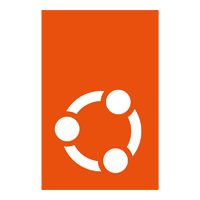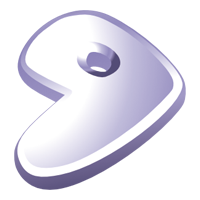
The Linux ecosystem is booming, and there are a wide variety of Linux variants to select from. There is a Linux distro out there for everyone, whether you’re a developer, gamer, or everyday user, and we’re here to help you find it.
A strong and well-liked operating system (OS), Linux has many advantages over other OSs. Incomparable customization, security, and stability are made possible by Linux’s open-source nature, which sets it apart from other options.
But it also leads to a plethora of variations. So how do you sort through them all to find the one that’s best for you?
To help you with that task, this post will examine the 10 best Linux distributions for 2023 and some of their standout features.
Here’s the list of our 10 best Linux Distros in 2023:
- Ubuntu: Best overall (Read more)
- Debian: Best for software integration (Read more)
- Linux Mint: Best for Windows migrants (Read more)
- Fedora: Best for community-driven development (Read more)
- Manjaro: Best for flexibility (Read more)
- Arch Linux: Best for lightweight simplicity (Read more)
- Gentoo: Best for granular control (Read more)
- Pop!_OS: Best for gamers and creative professionals (Read more)
- Slackware: Best for a minimalistic and customizable OS (Read more)
- openSUSE: Best for rich documentation (Read more)
10 Best Linux Distros Comparison
The table below presents a comparison between our top picks for best Linux distros based on different features and their pricing.
| ppc 64 | s390x | Graphical Installation Process | Release Cycle | Community Support | Pricing | |
|---|---|---|---|---|---|---|
| Ubuntu | ✅ | ✅ | ✅ | Every six months | ✅ | Free, open source |
| Debian | ✅ | ✅ | ✅ | No fixed schedule | ✅ | Free, open source |
| Linux Mint | 🚫 | 🚫 | ✅ | Almost every six months | ✅ | Free, open source |
| Fedora | ✅ | ✅ | ✅ | Every six months | ✅ | Free, open source |
| Manjaro | 🚫 | 🚫 | ✅ | Rolling release cycle | ✅ | Free, open source |
| Arch Linux | 🚫 | 🚫 | ✅ | Rolling release cycle | ✅ | Free, open source |
| Gentoo | ✅ | ✅ | ✅ | Rolling release cycle | ✅ | Free, open source |
| Pop!_OS | 🚫 | 🚫 | ✅ | Every six months | ✅ | Free, open source |
| Slackware | 🚫 | ✅ | 🚫 | Infrequent release cycle | ✅ | Free, open source |
| openSUSE | ✅ | ✅ | ✅ | Every 8-12 months (approx.) | ✅ | Free, open source |
Jump to:

1. Ubuntu
Best overall
Ubuntu is a user-friendly Linux distribution that supports a variety of devices and programs while offering features like multi-cloud orchestration and bare-metal deployment. Its Debian foundation and assortment of pre-installed apps make it the perfect option for newbies and home users.
Ubuntu provides a secure and reliable platform for users that value usability and dependability. Additionally, Ubuntu has a sizable user base, making it simple to get online resources and help.
Pricing
You can use and download Ubuntu for free.
Features
- User-friendly interface and support for all CPUs.
- Accommodates all popular CPU architectures.
- Update your computer’s hardware and security frequently with the most recent Linux kernels.
- Easy-to-use system settings with the option to minimize device installation.
- 5 years of Long Term Support (LTS).
Pros
- Easy installation process and options for customization.
- Extensive online community and support.
- Regular updates and security patches.
Cons
- Some software may not be compatible with Ubuntu.
- Some users may find it resource-intensive.
- Not recommended for advanced programmers.

2. Debian
Best for software integration
Debian provides a reliable base for server and desktop use and is one of the most established and stable Linux distributions. It’s well known for its dedication to security, providing prompt upgrades and a strong, secure system.
Debian is also renowned for having a sizable software repository with over 59,000 software packages, making it an excellent option for consumers and developers who need various software tools.
Pricing
Debian is free to download and use as donations and contributions from its users support the project, but consumers will have to pay when getting software CDs from a vendor.
Features
- Options for updating a particular package or the OS of Linux as a whole.
- An enormous software library gives users access to a broad selection of software packages, including system utilities, multimedia programs, and development tools.
- Simple-to-use package management interface and automated system security updates.
- An open bug tracking system (BTS) for gathering and exchanging vulnerability information.
Pros
- Incredibly secure and dependable.
- Advanced package management system.
- A large number of software programs.
- Extensive online community and assistance.
- Numerous architectures are supported.
Cons
- Less user-friendly than some other Linux variants.
- Installing and configuring software could call for some technical expertise.
- Less frequent updates than comparable Linux distributions.

3. Linux Mint
Best for Windows migrants
Based on Ubuntu, Linux Mint is a user-friendly OS with a sophisticated UI. Users switching from Windows and hoping to avoid a steep learning curve will feel relatively at home on it. Cinnamon, the clean and contemporary desktop environment that comes with Linux Mint, has a natural and intuitive feel. The system is well known for its dependability, simplicity, and stability, which makes it a favorite among novice Linux users.
Pricing
It costs nothing to download and use Linux Mint. Users who want to help the initiative can donate to it.
Features
- The open-source software has a simple and intuitive interface.
- Numerous pre-installed programs, such as multimedia codecs and well-known programs like Firefox, VLC, and LibreOffice.
- Excellent hardware assistance, including the most recent Wi-Fi and graphics cards.
- Many different types of hardware, including older PCs, are compatible with Linux Mint.
Pros
- Even novice users find Linux Mint to be incredibly user-friendly.
- Having a wide range of pre-installed programs and packages makes it a fantastic option for home and office use.
- The community surrounding Linux Mint is fantastic and offers users top-notch guidance and assistance.
Cons
- The system updates may be seen by some users as slower than those of other distributions.
- For experienced users who need specialized tools and applications, it might not be the ideal option.

4. Fedora
Best for community-driven development
A well-known Linux distribution called Fedora is renowned for its cutting-edge technology and emphasis on open-source software. It’s made with programmers and experienced users in mind, giving them access to the most recent software programs and customization tools.
Fedora is a great option for individuals who wish to stay current with the most recent advances in the Linux community because of its community-driven philosophy and regular upgrades.
Pricing
Fedora is entirely free and open-source operating software.
Features
- DNS, SSSD, NTP, and MIT safety information management integration.
- Build a relationship of credibility with other authentication management platforms, such as Microsoft AD.
- Modules are subject to granular control for various paths and installation configurations.
- Web-based GUI server management for Linux users of all levels.
Pros
- Availability of cutting-edge software and technology.
- More emphasis on privacy and safety.
- An OS that is reliable and stable is ensured by community-driven development.
Cons
- Not favorable for newcomers or casual users.
- Extensive technical skills may be required to operate and maintain the system.

5. Manjaro
Best for flexibility
Popular Linux distribution Manjaro was derived from Arch Linux, and its user-friendly interface, one of its primary advantages, makes it a perfect choice for folks new to Linux. Several well-known software programs are also pre-installed on Manjaro, making it a practical option for many people.
Manjaro also provides rolling releases, allowing customers to keep their systems updated with the most recent software without having to perform a complete system upgrade. Because of this, it is a great option for those who value flexibility and the capacity to employ the most recent applications.
Pricing
Manjaro is an open-source program that costs nothing to use.
Features
- Preconfigured desktop environments that can be customized.
- Supports and offers many kernel variants.
- Offer rollouts for quick software updates.
- Access to additional software options through the Arch User Repository.
Pros
- Simple for novices to utilize.
- Regular updates for security and additional features.
- Has a sizable community.
- Offers a good range of software options.
Cons
- Some users might want a more conventional Linux environment.
- Software instability may occasionally result from rolling releases.
- Official support isn’t as extensive as it is for other distributions.

6. Arch Linux
Best for lightweight simplicity
Arch Linux is a distribution that emphasizes sophistication, clarity, and user-centricity. It’s a popular choice for seasoned Linux users and developers as it offers a lightweight and configurable OS that enables users to construct their system from the ground up.
Thanks to Arch Linux’s comprehensive and up-to-date software repository, users can easily get the most recent software releases. The distinguishing feature of Arch Linux is its rolling release approach, which ensures that users always have access to the most recent software updates.
Pricing
Arch Linux is open-source and free to use.
Features
- The newest software upgrades are released using a rolling release strategy.
- Resources for programs such as RAID, LVM2, contemporary storage systems, and systemd (Init).
- Large and current software repository.
- With many modification choices, the design is compact and lightweight.
Pros
- Provides the most recent security fixes and software updates.
- Effortless and user-focused design.
- A sizable and modern software repository.
Cons
- Setup and configuration involve some technical knowledge.
- Not as user-friendly for beginners as some other Linux distributions.

7. Gentoo
Best for granular control
A free and open-source Linux system with a reputation for speed and adaptability, Gentoo is extremely customizable. Gentoo uses a “rolling release” strategy, in contrast to many other Linux distributions, so users can immediately obtain the most recent software updates and bug fixes.
Gentoo’s ideal users are those who desire total control over their OS and are prepared to invest the time and energy necessary to customize and configure it completely.
Pricing
Gentoo is free of cost, and anyone can use the software.
Features
- Advanced e-build procedure hooking technologies and unconventional patches.
- Administration of network setup for evolving, wireless, and adaptable networking.
- Performance-oriented, including builds tailored for particular hardware.
- Detailed instructions for handling installation, configuration, and management of packages.
Pros
- Performance-oriented and tailored to a particular hardware platform.
- Uses the rolling release method.
- The package management system for Portage is straightforward and extremely flexible.
Cons
- Steep learning curve for setting and customizing.
- Longer installation period because software must be compiled from source.
- Inappropriate for new users or those seeking a “plug and play ” operating system.

8. Pop!_OS
Best for gamers and creative professionals
Computer maker System76 created a Linux distribution called Pop!_OS to be compatible with their hardware. It has since been expanded for other users as well. A streamlined and user-friendly interface is provided by Pop!_OS, and power users can customize it in several ways.
The Pop!_Shop, a carefully chosen app shop that enables users to install and manage apps quickly, is one of its distinctive features. Through the Steam Play function, it also offers great gaming compatibility with both native and Windows titles. In conclusion, Pop!_OS is a great option for people seeking a user-friendly, configurable Linux distribution with top-notch gaming support.
Pricing
Pop!_OS is completely free to download and use.
Features
- Pop!_Shop, a curated app store for easy software installation.
- Offers Automatic Tiling Utilizing Pop Shell.
- Pop_OS offers the most significant improvements and security updates.
Pros
- A simple-to-use UI with a modern appearance.
- Excellent gaming support is provided by Proton Pop and Steam Play.
- Pop!_Shop offers a simple method for controlling program installations.
- Provides a wonderful blend between usability and customizability.
Cons
- The simplified UI may hinder certain users who desire greater authority over the system.
- Some users may feel constrained by the curated Pop!_Shop.

9. Slackware
Best for a minimalistic and customizable OS
Slackware, one of the earliest surviving Linux distributions still being developed, was first released in 1993. It’s renowned for being easy to use, stable, and secure. Slackware is intended for experienced users who like to build unique OS.
It is not a distribution for novice users and requires some familiarity with Linux to operate efficiently. Slackware differs from other OSs in that it employs a text-based installer rather than a graphical one. This increases the complexity of the installation procedure while giving users more discretion over how their system is configured.
Pricing
Slackware is a free and open-source operating system.
Features
- A thorough standard installation that includes KDE, productivity applications, and Xfce computers.
- Basic instructions for installing and monitoring software bundles.
- Managing configurations using plain text documents and command prompt.
Pros
- Offers a dependable and safe system.
- Extremely flexible and programmable.
- Has an extensive software library.
- Updates are released in a rolling fashion.
Cons
- Not suitable for beginners as it requires prior Linux familiarity and expertise.
- For some users, the absence of a graphical installer may be challenging.
- May be difficult to navigate the extensive backlog of documentation.

10. openSUSE
Best for rich documentation
An intuitive user interface, simple configuration resources, and a selection of software packages accessible through its repository are all features of the Linux distribution known as openSUSE.
OpenSUSE’s rich documentation, which encompasses everything from setup to advanced settings, is one of its most remarkable qualities and makes it a perfect option for people new to Linux or those looking for additional guidance.
With regular updates and a current focus on maintaining the system, OpenSUSE is renowned for its reliability and security.
Pricing
OpenSUSE is an open-source, free OS.
Features
- Software for managing administrators, such as OSEM, YaST, and OpenQA.
- Open Build Service (OBS) works efficiently for developers to create and deploy packages effectively.
- Assists physical and virtual machines, including VMware and QEMU.
Pros
- User-friendly for beginners with a straightforward UI.
- Offers a variety of software programs.
- Lots of support and documentation available
- Stable and frequently updated.
Cons
- Some hardware and drivers may cause problems for certain users.
- Updates can occasionally result in compatibility problems.
Key Features of Linux Distros
Linux distros can differ radically from one another due to their open-source nature, so it’s important to know what you’re looking for when you set out to adopt one.
Some key features to take into consideration include the intended use of the OS, its hardware requirements, available software support, system stability, and ongoing community support such as documentation and integrations.
- Intended Use: Consider your specific needs and what you plan to use Linux for. Different distros are tailored for different tasks, such as Ubuntu for software development, Fedora for system administrators, and Kali Linux for ethical hacking and security testing.
- Hardware Requirements: Linux is known for being lightweight and running on minimal hardware resources, but it can still consume a lot of memory when it gets going. Consider the hardware on which you will be running Linux and choose a distro that can handle it.
- Software Support: Since Linux distros are always changing and upgrading across a broad and complex user base, you may want to seek out one with reliable software and service support for critical systems.
- Stability: Some distros emphasize stability, while others focus more on flexibility and customizability. If you need a reliable, stable system, look for distros like Debian, openSUSE, Linux Mint, and RHEL. Bleeding-edge distros like Arch Linux may have the latest features but can be less stable.
- Documentation and Community Support: Look for distros with clear documentation and a strong community to provide support and answer questions. This can help ensure a long lifespan for the distro and make it easier to use.
How Do I Choose the Best Linux Distro for My Business?
Consider your organization’s unique needs and requirements when selecting the best Linux distribution for your company, including compatibility with your hardware and software, simplicity of use, support choices, and security features. Additionally, it’s critical to consider the user base and the accessibility of tools like forums and manuals.
Certain distributions may be more appropriate than others for your business’s industry and use cases, such as Arch Linux and Debian for enterprise-level businesses or Ubuntu for small enterprises. To identify the ideal distribution for your company, it’s crucial to conduct research and test out several options.
Methodology
The user interface, software compatibility, stability, security, ease of installation, and overall user experience were all elements we considered when listing the 10 best Linux Distros. We also considered the particular requirements and use cases of various sectors and companies, and we assessed each distribution according to how effectively it satisfied those requirements.
The final list was determined based on a combination of these criteria to offer a thorough and impartial overview of the best Linux distributions for corporations as well as new and experienced private users.
Whatever OS you end up with, you’ll need a strong, reliable cloud backup service to back up your data. Here are the best ones available today.

